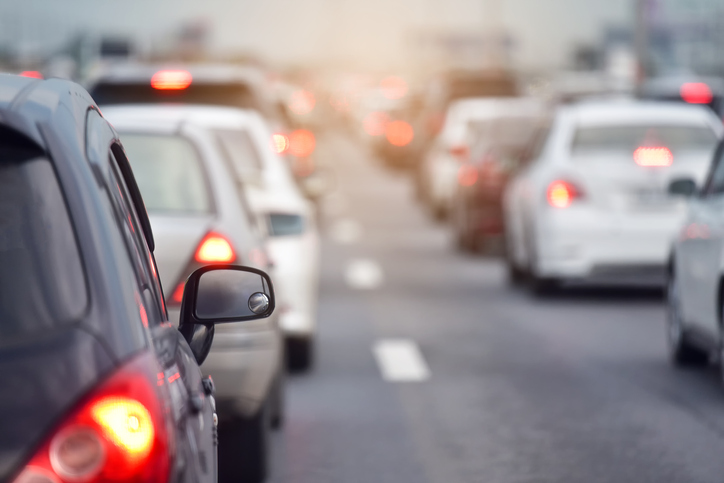When I bought my car in 2016, I put down less than 20% and was advised by the dealership to get something called “gap insurance.” I declined because it was an additional cost that I thought I didn’t need. However, within a year, I got into a bad accident.
Thankfully, my car wasn’t totaled — but if it had been, the insurance payout wouldn’t have been large enough to cover the rest of my auto loan. In other words, I would have been stuck paying for a car I no longer owned, wishing I had opted for gap insurance.
So, what is auto gap insurance? Gap insurance is additional coverage that protects the driver from financial loss if their car is totaled or stolen, covering what their insurer won’t.
Everything You Need To Know About Gap Insurance
Gap insurance can go the extra mile to financially protect a driver when their car is stolen or totaled after an accident. It’s optional coverage that drivers add to an existing policy.
What Is Gap Insurance, and What Does It Cover?
The purpose of gap insurance is to provide financial protection to drivers who experience car theft or a total loss. For instance, if your car is wrecked in an accident and you owe more on the auto loan than the vehicle’s actual cash value, gap insurance will kick in to, well, fill in the gap.
Gap is an acronym for “guaranteed asset protection.” And gap insurance is an optional type of auto insurance coverage that you can add to your existing policy.
When do you need gap insurance?
Gap insurance benefits drivers who are underwater on their auto loans, meaning they owe more than the car’s actual worth. Since car values depreciate quickly, it isn’t uncommon for drivers to be in this position, especially during the first and second years of ownership. In fact, during the first year, a brand-new car can depreciate in value by about 20%. That’s why gap insurance is also sometimes called “loan/lease gap coverage.”
When is gap insurance not necessary?
Since this type of coverage is primarily for people who are underwater on their auto loans, there are some scenarios when gap insurance likely isn’t needed:
- Your down payment was at least 20%. Since car values fall rapidly during the first year, putting down at least 20% helps ensure that you don’t end up underwater if your car is stolen or totaled.
- Your loan term is shorter than five years. If you have a longer-term auto loan, you risk building equity — or the difference between your loan balance and the car’s resale value — too slowly.
- Your car retains its value. Certain vehicles hold their value better than others, such as some SUVs, trucks, and sports cars that have a cult following.
- You’re leasing a car. Typically, the cost of gap insurance is automatically rolled into your lease payments. Make sure to check the specifics of your contract.
Does full coverage include gap insurance?
Full coverage insurance refers to an auto insurance policy that includes several types of insurance packaged together, such as liability, collision, and comprehensive coverage. Having full coverage means you’re protected in the event of a car accident, hitting an object while driving, or even damage caused by a natural disaster.
However, if your car is deemed a total loss in any of those situations, your insurance will only pay the actual cash value of the car — not how much it was worth brand-new when you took out a car loan. This is when gap insurance can be helpful in covering the difference, but you have to purchase it separately for an added fee.
How Does Gap Insurance Work?
When you finance a car purchase, you agree to pay back the principal amount borrowed from your lender, plus interest. Even if you total your car, that loan still needs to be paid back.
In the case of a total loss, your insurance company will resolve the claim by sending your lender a check for the current market value of your vehicle. If that happens within your first couple of years of owning the car, there’s a good chance that the insurance payout won’t be enough to pay back your loan, thanks to rapid depreciation. Gap insurance would cover the difference between what your insurer pays and the remainder of your loan balance, allowing you to cover the full amount that you owe.
Gap insurance example
Let’s look at a simplified example with a promotional annual percentage rate, or APR, of 0%. Say you bought a car for $20,000 and took out a five-year loan with a 10% down payment ($2,000). That brings the car loan amount to $18,000.
To calculate the monthly payment, divide $18,000 (the loan amount) by 60 months (the loan term), resulting in a payment of $300 per month. After one year, your loan balance is $14,400. Let’s also say that your car depreciated 30% during this time, so its value is now $14,000.
Unfortunately, your car gets totaled in an accident. Assuming you have full coverage, your insurance company will subtract your deductible ($500 in this case) from the car’s cash value, resulting in a payout of $13,500. Remember, however, that you have a loan balance of $14,400. That means you’re responsible for paying the remaining $900 out of pocket — for a car you can’t even drive anymore. Gap insurance can take away the financial sting by covering that difference.
Here’s a breakdown of the numbers:
| Gap Insurance Example | |
|---|---|
| Car price | $20,000 |
| 10% down payment | $2,000 |
| Car loan amount | $18,000 |
| Monthly payment | $300 |
| One year of payments | $3,600 |
| Loan balance after one year | $14,400 |
| Car value after one year (30% depreciation) | $14,000 |
| Deductible | $500 |
| Insurance payout (cash value minus deductible) | $13,500 |
| Remaining loan balance after insurance payout | $900 |
| Gap insurance coverage | $900 |
| Out-of-pocket costs | $0 |
Is Gap Insurance Worth Buying?
Generally, gap insurance isn’t mandatory, but here are some examples of when you should consider purchasing it to protect yourself financially:
- Your loan term is five years or longer. A longer-term loan might seem tempting due to the lower monthly payments, but you’ll build equity slower. Plus, it’ll cost more in interest.
- Your car depreciates faster than average. Certain luxury cars (and more recently, some sedans) tend to lose value even faster than normal.
- You rack up miles quickly. One of the biggest factors contributing to car depreciation is mileage. If you tend to drive a lot, your car’s value will go down faster.
- You’re trading in your previous vehicle. When you trade in your old car, the dealer may add the remaining loan balance to your new auto loan, increasing your negative equity.
Shopping For Gap Insurance
With different options for obtaining gap insurance, figuring out the best way forward can be difficult. That’s why we’ve broken down how to get gap coverage, how much it costs, whether it’s worth getting from a dealer, and which companies and organizations offer it.
How to get gap insurance
Before making the purchase, here are some steps you should take to get gap coverage:
- Contact your insurer to see if it offers gap insurance. You can get gap insurance from some dealerships when you purchase a new car, but you may end up paying more than necessary due to inflated prices and interest. If your current insurance company doesn’t offer gap insurance, you might be better off buying it from a third-party insurer.
- Check the requirements for coverage. For example, your insurer may require you to be the original owner of the vehicle, and the car can’t be more than 3 years old.
- Shop around. Instead of agreeing to the first available option, you should compare different quotes from several sources to get the best deal in the end.
How much is gap insurance?
The cost of gap insurance depends on a few factors, including what car you drive and where you buy coverage. Adding gap coverage to a policy with collision and comprehensive insurance generally raises your premium by about $20 per year, according to the Insurance Information Institute. However, if you purchase from a dealership, Kelley Blue Book says you can typically pay an upfront cost of $400 to $700.
Buying gap insurance from a dealer
Your dealer may ask if you’d like to add gap insurance during your car purchase. While it’s convenient to take care of the coverage right then, gap insurance is generally more expensive through a dealer than an insurance company.
If you’re leasing a car, ask if gap insurance is already included in your contract. It may be hard to spot, but dealerships typically purchase gap insurance to cover all the cars they lease and roll it into your payments as a “gap waiver.” So, if your leased vehicle is totaled, you would be covered for any gap amount.
Where to buy gap insurance
Since gap coverage is usually optional, it’s not available across all insurance companies. Here’s a list of some major insurers that offer gap insurance:
If your insurance company doesn’t offer gap coverage, here are some other organizations and companies where you can purchase it:
Keep in mind that our lists don’t reflect all the insurers that offer gap insurance, and the cost of coverage will vary depending on the company or organization as well as other factors.
3 Tips for Getting the Most Out of Gap Insurance
When you’re spending your hard-earned dollars, you want to know that you’re getting the best deal possible. Here are a few tips to maximize gap insurance coverage without having to total your vehicle:
- Compare your options for the best price. Don’t feel pressured to get gap insurance through your dealership. Instead, see if your current insurance company offers gap insurance, and shop around to find a good deal.
- Get gap insurance ASAP. The fewer payments you’ve made toward your auto loan, the more you’ll have to pay out of pocket if something were to happen. So, it’s smart to protect yourself financially while you’re still in the early stages of paying off your car.
- Keep track of your loan balance. It’s important to regularly check how much you owe. Gap insurance doesn’t expire when you add it to your policy, so it’s up to you to cancel your coverage as soon as you owe less than how much your car is worth. Remember, small costs can go unnoticed and then add up significantly over time.
The Bottom Line on Gap Insurance
Gap insurance provides additional coverage for drivers who owe more than what their vehicle is worth. If your car is totaled or stolen, gap insurance will cover the difference between your insurance payout and the leftover loan balance, so you’re not on the hook for a car that you no longer have.
So, is gap insurance worth it? While optional, there are big benefits to purchasing gap coverage. You could be the safest driver in the world but encounter a stroke of bad luck, and having gap insurance would cover you financially. With a relatively affordable price tag and the flexibility to cancel, gap insurance can be worth the investment.
Read about different auto body repairs that insurance will cover.



